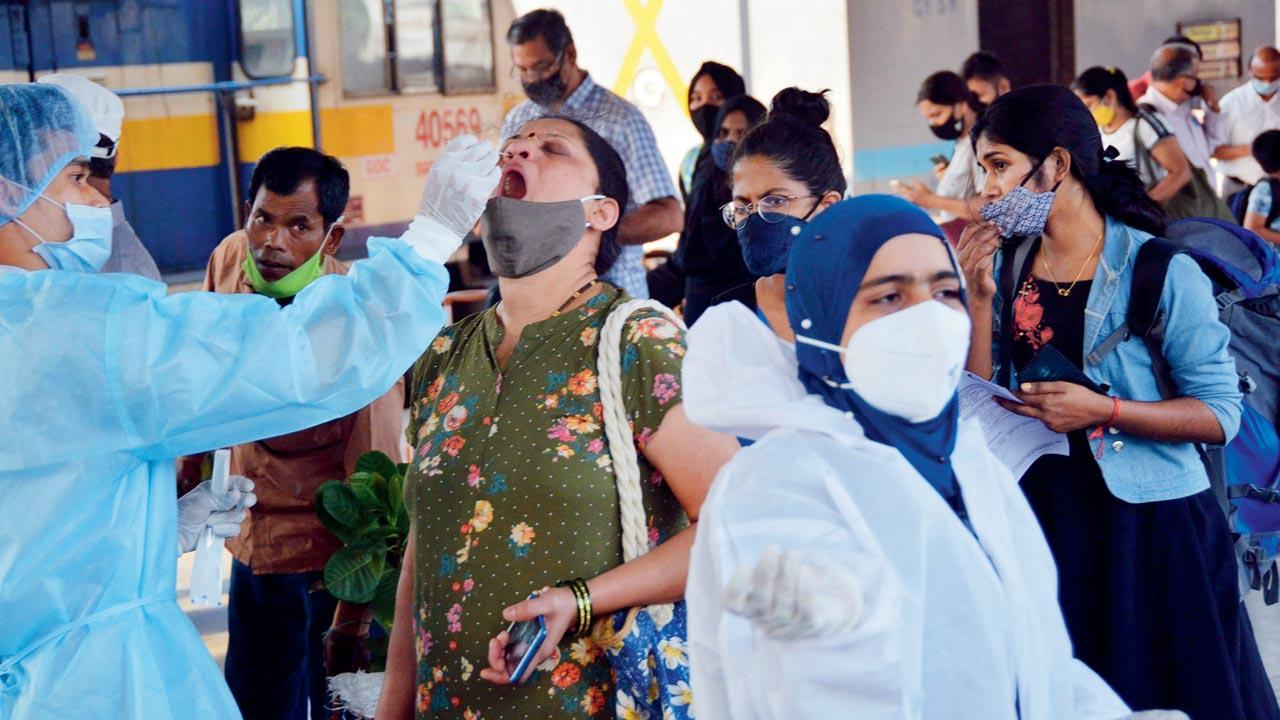However, some wards in south Mumbai and in the suburbs of Malad, Kandivli and Borivli are showing fewer cases for the moment

Civic health workers conduct antigen tests of passengers arriving at Lokmanya Tilak Terminus on Thursday. Pics/Sayyed Sameer Abedi
The city is on the verge of the second wave of the COVID-19 pandemic and many areas in the western and eastern suburbs are registering more cases than in last October during the first peak. However, some areas mostly in the south part of the city, like Colaba, Fort, Malabar Hill, Tardeo, Bhendi Bazaar have less cases now, in comparison to October.
ADVERTISEMENT
Most areas like Andheri, Vile Parle, Khar, Bandra, Chembur, Mulund have been witnessing a large number of cases. Some of the wards have already crossed the highest number in the first peak. Until now, the maximum number of daily cases registered was on October 7 (2,848) and October 8 (2,823) (between October 4 and 10). K west (Jogeshwari west, Andheri west, Vile Parle west), K east (Jogeshwari east, Andheri east, Vile Parle east), T (Mulund), D (Malabar Hill, Tardeo), R central (Borivli) and R south (Kandivli) had registered more than a thousand cases that week.
Arriving passengers being tested at the Lokmanya Tilak Terminus on Wednesday
Now many of these and some other wards are showing the same trend. K west has already crossed the maximum cases. It had 1,093 cases in the first week of October and it has registered 1,138 cases last week. Similarly, K east and T ward have registered an almost equal number of cases. “The city is open and our area has lots of commercial and industrial units with thousands in the floating population. We have increased the number of tests for early detection,” said a K East official.
In Chembur, 427 cases were reported in October and the ward had 497 cases last week. Even H west ward, which had 624 cases in October now has 533 cases.
Another trend
On the other hand, Borivli and Kandivli which had more than 160 daily patients between October 4 and 10 in the first peak, now have an average of 100 daily cases. There are some areas like Malabar Hill, Tardeo and Malad which are also experiencing few cases at least now. In D ward consisting of Malabar Hill and Tardeo which had more than 100 cases per day, there are now around 60 daily cases. Likewise, Malad which is dominated by slums sees 80 cases daily now in comparison to 120 cases earlier. The same trend is reflecting in other wards of south Mumbai.
“We are following the standard guidelines like testing, tracing and regular follow ups with people who test positive. Our health teams are on the ground, imposing fines on the maskless, randomly checking positive people in quarantine. All this has given the result,” said Chakrapani Alle, assistant commissioner of B and C ward.
 Subscribe today by clicking the link and stay updated with the latest news!" Click here!
Subscribe today by clicking the link and stay updated with the latest news!" Click here!






